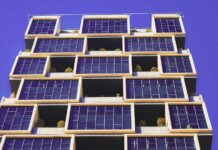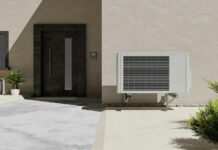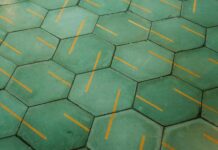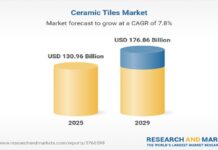A new innovation in smart windows promises to revolutionize how buildings regulate light, warmth, and privacy. By switching between clear and opaque modes at different temperatures, a recently developed solid thermochromic material could pave the way for more energy-efficient and sustainable buildings.
Imagine living in a home where windows adapt to the changing world outside. During the day, these smart windows allow sunlight to brighten your living room, while in the evening, they become opaque, offering privacy without the need for blinds or curtains.
At the ASTAR Institute of Sustainability for Chemicals, Energy and Environment (ASTAR ISCE2), Senior Principal Scientist Jianwei Xu and his team have been exploring thermochromic materials—substances that change color based on temperature—to enable these adaptive windows.
“Beyond privacy, smart windows like these would be useful in colder climates, where they would help trap solar heat during the day and reduce heat loss at night,” said Xu, noting that this technology presents an elegant solution to the challenges of creating sustainable architecture.
Challenges and Breakthroughs
Although thermochromic materials hold great potential, they have historically faced limitations. Transparent materials like hydrogels and thermogels often lack the structural integrity to function as free-standing windows. Instead, they need to be layered over other materials, making windows bulky and less efficient.
To overcome these challenges, Xu’s team partnered with Qiang Zhu, Head of the Advanced Characterisation and Instrumentation Department at the ASTAR Institute of Materials Research and Engineering (ASTAR IMRE), and other researchers at IMRE to develop a groundbreaking material.
This new thermochromic polymer overcomes these limitations, providing exceptional optical clarity and stability. The team’s research confirmed that the material remained clear and stable through repeated heating and cooling cycles.
Their innovative polymers achieved an optical transparency of up to 99 percent and a solar modulation ability of up to 87 percent—outperforming other promising materials, which typically reach around 70 to 99 percent transparency and up to 70 percent in solar modulation.
Expanding Applications
The team is currently refining the material to allow for a reverse transition, broadening its versatility and potential as part of a new generation of adaptive materials for sustainable architecture and energy solutions.
This innovation signals an exciting future for adaptive materials that align with sustainability goals—offering practical, efficient, and elegant solutions for homes, greenhouses, and other energy-dependent structures.





























